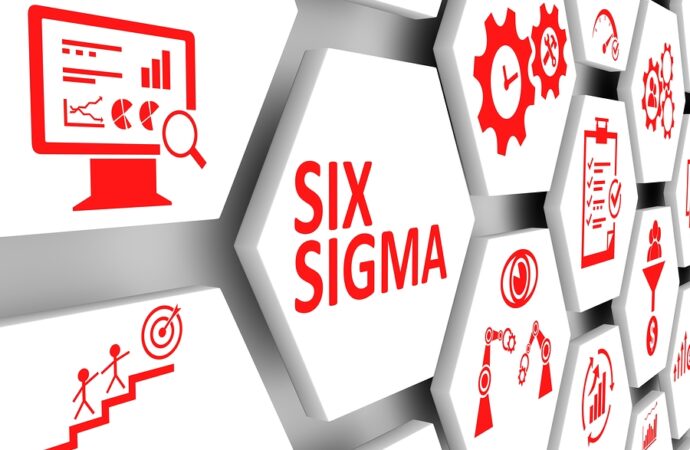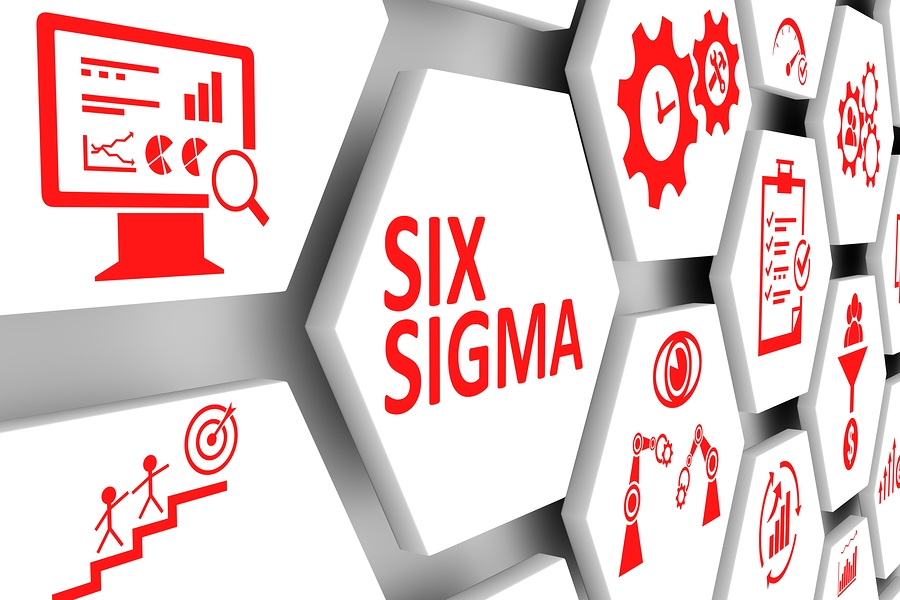What is Lean Six Sigma in California?
Contact Us

Why should you choose Six Sigma?
Six Sigma traces back to 1987 when Motorola officially launched it. Following that, this quality management approach has seen an intriguing development curve. Its growth was sluggish at first, but it eventually gained popularity as a result of the promising performance. Six Sigma’s early growth potential was recognized in the mid-1990s when Jack Welch, then-CEO of General Electric, and Larry Bossidy, then-CEO of AlliedSignal, adopted the methodology. Since then, several companies around the world have adopted and reaped the advantages of this approach.
Six Sigma was once referred to as a “management fad” on the path to being known as a quality management approach! Six Sigma, on the other hand, has rescued Fortune 500 companies and culminated in projected gains of millions of dollars. As a result, it has shown that it is not a passing fad in management.

The Benefits of Using Six Sigma
As applied with accuracy and discipline, the Six Sigma approach has many operational advantages. Enhances consumer satisfaction and improves customer retention: Any profitable company strives to keep its current client base. When you maintain consumer delight, the clients will opt to stay faithful to your brand rather than moving to a different service or product offering. Are you mindful of the customers who are dissatisfied with the service offerings? Many companies are possibly unaware of this reality, and they prepare market growth plans without understanding their consumer satisfaction ratings.
If you use the Six Sigma technique, you automatically remove the risk of disgruntled clients. To effectively improve consumer engagement, perform a customer dipstick to understand the critical qualities of your service or product that are necessary for customer satisfaction. When you formulate your market growth plans, you should be certain that you are not missing aspects that pique consumer attention, allowing you to expand your customer base.
The new market environment necessitates a combination of business knowledge, efficiency, usage of cutting-edge technology, and aggressive quality control. Do you want the company to be ranked alongside the industry’s leaders? Is achieving a strategic advantage over your rivals one of your key market goals? Using Six Sigma methodologies to optimize the efficiency of the available capital.
Frequently Asked Questions
Why Six Sigma?
Progress is on the horizon of today's world. The only exception, if any, is that the rate of transition accelerates with each passing year. The role of management in an organization is to develop systems. Value-creation and value-delivery Systems for consumers and owners. This is an ongoing process. Competitors innovate in order to retain consumers. Innovations change the way goods and services are delivered to consumers. Customer expectations change at breakneck speed. What delights today becomes a must tomorrow.
The “change imperative” is one aspect that all organizations recognize. Organizations that want to fight reform are required to adjust or die. The shift is embraced by Lean and Six Sigma. It promotes the continual development of both consistency and timeliness as a theory. Management must devise novel approaches to product and service offerings. Rather than a set of programs, operational change becomes a way of life.
How does Lean Six Sigma work?
Lean Six Sigma is a framework and collection of techniques. Managers should use these as a reference to promote change in their respective fields. Master Black Belts and Black Belts serve with the operations and development departments. This means the Six Sigma is heading in the right direction and that it is aligned with corporate strategies.
Since finding the correct Lean Six Sigma partner, as selecting every other partner, manufacturer, or provider, is vital to program progress, it seems only appropriate to extend expertise to designing a few often asked questions to consider while assessing prospective partners. Here are some of the more frequently asked questions, along with some insight into the types of responses to be expected.
How do you handle managing classes through their projects?
At the very least, your Lean Six Sigma partner could have a Six Sigma delivery and teaching model in place, with an accomplished Master Black Belt who can help train and coach on ventures. The Master Black Belt should have real-world experience and recognize the uniqueness of your company, climate, and people. During preparation, candidates can develop tools and adapt them to real-world programs. Managing courses across assignments often entails integrating project outcome indicators so that learners can convert their training interactions into project outcomes. This involves monitoring dollars realized, cycle times, and plan slippage, as well as toll gates, to ensure programs are finished on budget and with reliable performance. The Master Black Belt should also generate coaching notes in order to recognize and resolve participant and structural project problems.
How can you incorporate your program with the work that our company is already doing?
Understanding an organization's readiness to implement a Lean Six Sigma initiative is critical to progress. Your implementation partner should outline activities for a preparation review, which will pave the foundation for continuous deployment. This involves analyzing existing initiatives that are in the pipeline or in development, as well as defining current change efforts and upcoming programs. A readiness evaluation should include a summary of areas of scope for progress found in a gap report, as well as an analysis of consumer and market survey results. Both of these elements can aid in the identification of possible implementation threats, which can then be resolved.
Six Sigma is about statistics, do I need to learn statistics?
Six Sigma analyzes problems and measures results using mathematical methods. Six sigma figures are focused on inferential statistics and probability theories. Six sigma is about more than mere numbers.
It is a set of strategies for defining what the consumer wants and aligning the organization and services, including measuring systems, to fulfill such requirements. Six Sigma decreases the number of surprises (variation) and increases objectivity in success evaluation (what “good” means), especially in terms of customer execution. To be a Six Sigma specialist, you must have a deep willingness to have outstanding customer service, be able to test the status quo on a daily basis, and provide a basic grasp of statistics.
What is the difference between Six Sigma and Lean?
The gradual elimination of waste is referred to as the Lean solution (called Muda in Japanese). There are seven categories of waste in operations, according to Taiichi Ohno (TPS fame). Identifying and removing waste is critical to providing service to consumers.
Lean and Six Sigma methodologies are both used to optimize company operations and efficiency. Lean focuses on systems, improving flow, and increasing performance. Six Sigma is concerned with growing productivity, improving efficiency, and increasing effectiveness.
There are so many areas or regions where we offer these services with most of them being cities.
However, if you need any of these services, you need to contact us. The list below comprises the areas where we offer these services.

